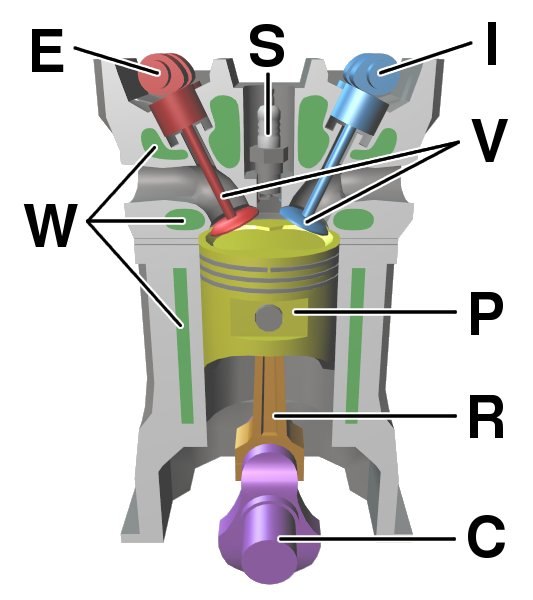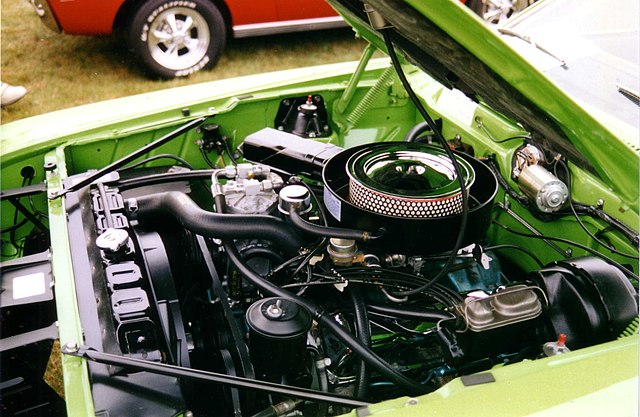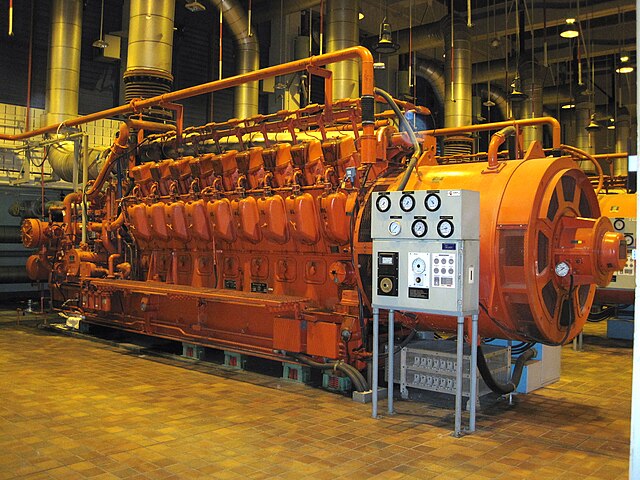A combustion chamber is part of an internal combustion engine in which the fuel/air mix is burned. For steam engines, the term has also been used for an extension of the firebox which is used to allow a more complete combustion process.
OHC engine combustion chamber, located between the piston (shown in yellow) and the valves (blue and red)
Dished piston for a diesel engine
Internal combustion engine
An internal combustion engine is a heat engine in which the combustion of a fuel occurs with an oxidizer in a combustion chamber that is an integral part of the working fluid flow circuit. In an internal combustion engine, the expansion of the high-temperature and high-pressure gases produced by combustion applies direct force to some component of the engine. The force is typically applied to pistons, turbine blades, a rotor, or a nozzle. This force moves the component over a distance, transforming chemical energy into kinetic energy which is used to propel, move or power whatever the engine is attached to.
Diagram of a cylinder as found in an overhead cam 4-stroke gasoline engine: C – crankshaft E – exhaust camshaft I – inlet camshaft P – piston R – connecting rod S – spark plug V – valves. red: exhaust, blue: intake. W – cooling water jacket gray structure – engine block
Reciprocating engine of a car
Diesel generator for backup power
Bare cylinder block of a V8 engine






